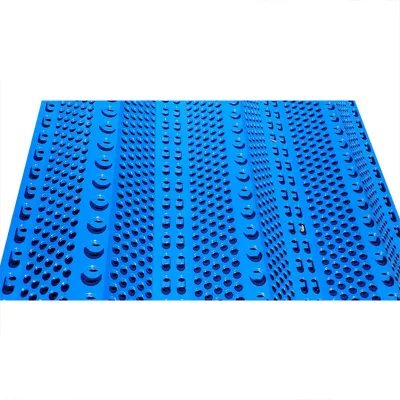The Aesthetic and Functional Appeal of Perforated Sheet Facades
In contemporary architecture, the quest for innovative design solutions that balance aesthetics, functionality, and sustainability has led to the increasing popularity of perforated sheet facades. These architectural elements offer a unique blend of beauty and practicality, making them a sought-after choice for modern buildings. This article will explore the advantages, design possibilities, and environmental considerations associated with perforated sheet facades.
What are Perforated Sheet Facades?
Perforated sheet facades are constructed using sheets of metal or other materials that are punctured with a series of holes or patterns. These holes can vary in size, shape, and arrangement, allowing for creative expression tailored to the architectural vision. This technique can be applied to materials such as aluminum, steel, or composite panels, resulting in a robust yet visually interesting exterior. The use of perforation not only adds an extraordinary character to buildings but also serves several functional purposes.
Benefits of Perforated Sheet Facades
One of the most significant advantages of perforated sheet facades is their ability to manage light and airflow effectively. The patterns created by the perforations allow natural light to filter into the interior spaces while reducing glare and overheating. This feature enhances the comfort of occupants and reduces the dependency on artificial lighting during the day, contributing to energy efficiency.
Ventilation is another critical function of perforated facades. By allowing air to flow through the openings, these facades can help regulate the temperature inside the building, lessening the need for mechanical cooling systems. This natural ventilation promotes indoor air quality and provides a healthy environment for occupants.
Moreover, perforated sheet facades can also be used to enhance privacy without completely obstructing views. This is particularly beneficial for residential buildings or offices located in densely populated areas. The strategic arrangement of perforations can create a shield from prying eyes while still allowing light to enter.
perforated sheet facade

Aesthetic Versatility
The versatility of perforated sheet facades is one of their most alluring characteristics. Architects can use different perforation patterns, colors, and materials to create a striking visual impact tailored to the building's purpose and surrounding environment. For instance, a vibrant and intricate design can make a commercial building stand out, while a simpler, more subdued aesthetic may be more suitable for residential structures.
Additionally, the use of laser-cut technology in creating perforated patterns enables even greater creativity and precision. From geometric shapes to organic motifs, the possibilities are virtually limitless. This adaptability allows for a thoughtful integration of the building into its context, making it a complementary element of the urban landscape.
Sustainable Design Considerations
In a world increasingly focused on sustainability, perforated sheet facades can play an important role in reducing the environmental impact of buildings. Their ability to enhance natural lighting and ventilation can lead to decreased energy consumption, aligning with green building principles. Moreover, many manufacturers now offer perforated sheets made from recycled materials or designed for easy recyclability, further promoting sustainable practices in architecture.
The durability of materials commonly used for perforated facades, such as stainless steel and aluminum, contributes to the longevity of the building, reducing the need for frequent replacements and maintenance. This resilience not only minimizes environmental impact but also lowers the overall lifecycle costs of the building.
Conclusion
Perforated sheet facades represent a perfect convergence of form and function in modern architecture. Their ability to combine aesthetic appeal with practical benefits makes them a viable option for various building types, from commercial structures to residential homes. As architects continue to explore innovative design solutions that prioritize sustainability and occupant comfort, perforated sheet facades will undoubtedly remain at the forefront of cutting-edge architectural design, redefining the possibilities of building exteriors for years to come.
-
Why Galvanized Trench Cover Steel Grating Resists Corrosion
NewsJul.10,2025
-
The Versatility and Strength of Stainless Expanded Metal Mesh
NewsJul.10,2025
-
Load Calculations in Steel Grating Platforms
NewsJul.10,2025
-
Keeping Pets and Kids Safe with Chicken Wire Deck Railing
NewsJul.10,2025
-
Hole Diameter and Pitch for Round Perforated Metal Sheets
NewsJul.10,2025
-
Aluminium Diamond Mesh in Modern Architecture
NewsJul.10,2025
Subscribe now!
Stay up to date with the latest on Fry Steeland industry news.

